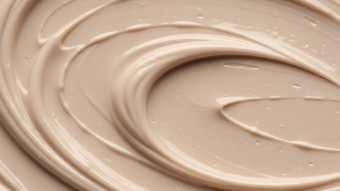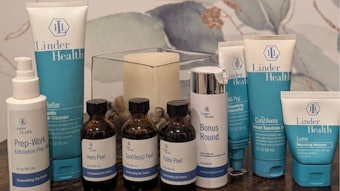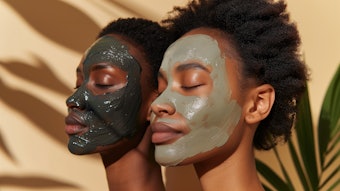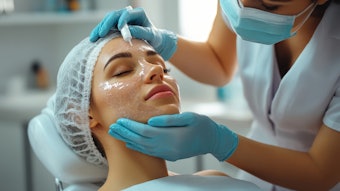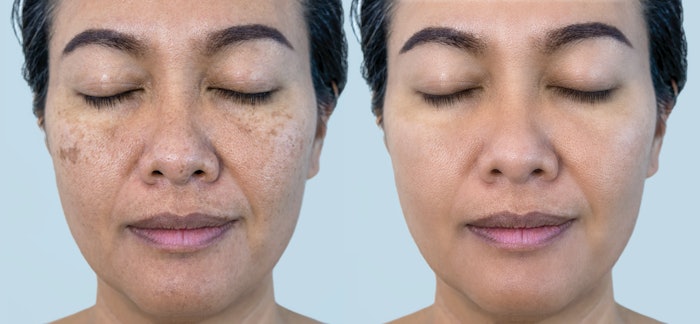
Let’s be honest—chemical peels are having a major moment. They’re powerful, transformative and can deliver jaw-dropping results... but there is a lot to know going into it. Behind every flawless post-peel glow is a professional who had to navigate licensing laws, insurance clauses, flaky reps and the constant search for the products and treatments that truly work amongst the noise of social influence.
Log in to view the full article
Let’s be honest—chemical peels are having a major moment. They’re powerful, transformative and can deliver jaw-dropping results... but there is a lot to know going into it. Behind every flawless post-peel glow is a professional who had to navigate licensing laws, insurance clauses, flaky reps and the constant search for the products and treatments that truly work amongst the noise of social influence.
One of the most exciting things about today’s advanced peels and pigment-correcting treatments is that they don’t require a room full of equipment and a plethora of back-bar products as you do with traditional facials. Instead, peels are streamlined, simple and incredibly effective—with minimal setup and maximum impact. This is a huge plus for small business owners looking to keep overhead costs low. You can build an entire profitable aesthetic career offering just these types of skin-transforming services.
With today’s technology, you're able to treat everything from melasma to acne scars to laxity—without needing a $75K laser or a week-long certification retreat.
Unlike a full facial—which might involve 12 products, a steamer, hot towels, LED, quiet environment, fully private rooms, full bed change, etc. Modern peels usually require gloves, a cleanser/prep solution, a fan brush, the treatment solution, post-care cream/SPF, a clean workspace and good lighting. That’s it. No fluff. No chaos. Just clinical precision, gorgeous results and a treatment that feels high-end without being high maintenance.
The best part? Clients expect these services to be fast.
This isn’t a 90-minute beauty nap. It’s a 30-minute express powerhouse.
You’re delivering serious results with seriously minimal fuss—and getting paid like the skin care professional that you are.
Thanks to the science behind today’s formulations, the application protocols are as varied as the ingredients themselves. Here's a quick look at some common styles:
- Layer-and-leave-on peels: These are often TCA-based. You apply, let it absorb and the client shouldn’t wet the skin or sweat for the rest of the day. Peeling may start 3–5 days later.
- Pressurized application: Bio-revitalizing treatments require a pressurized massage application that can make you feel like you're totally smooshing your client's face, but the feedback is always that it feels like a nice deep-tissue massage.
- Timed peels with water removal: Some formulations (especially glycolic or salicylic blends) stay on for a specific time window—then must be neutralized or removed with water.
- In-office peel, at-home activation: A single Cosmelan or Dermamelan treatment can have pigment-correcting abilities that rival a full IPL series. Shocking right? Well, so is the protocol! The client receives their intense application in clinic, and must leave a thick, peanut butter-type mask on for 4-6 hours to remove at home! Maybe with the use of a strap-on ion mask on top of that! Other treatments like the VI peel include specific products and protocols to continue peeling your own skin at home between treatments.
Yes, the protocols can be a little wild—wearing a mask for 8 hours, sun banishment for weeks—but the results? Next level.
So if you’re ready to level up your treatment menu or a skin care lover curious about what really goes into offering these treatments, this is your no-fluff, no-fear guide to chemical peels. We’re breaking down the real deal: how to choose the right products, protect your business, get glowing results and keep your clients safe (and obsessed.)
Here's what you really need to think about before adding peels to your service menu:
- How to understand peels & choose the right ones
- How to build strategic brand partnerships
- Understanding legal restrictions, insurance coverage & risk management
- Team training, protocols, documentation and follow up
- Marketing and launch events
Let’s dive deeper into each one below:
Peel Power: A Look at the Ingredients Behind the Results
We’ve come a long way from the days of glycolic peels mixed in back rooms and neutralized with baking soda. The world of professional exfoliation and skin regeneration has evolved dramatically, and with it, so has our understanding of how to get results without wrecking the skin barrier or scaring clients away with days of downtime. Today’s advanced cosmetic peels don’t just exfoliate—they can stimulate, revitalize and heal from the inside out. It all comes down to the ingredients, and how they’re used.
Let’s break down the most common players in cosmetic peels, and why the newer bio-revitalizing TCA formulas (like those from PRX and Factor 5 Skincare) are taking center stage.
If you’ve been looking into peels at all I’m sure you’ve seen the surge in the newest no peel, peel technology, but then noticed that behind its name is a tried and true formula name we recognize as a long-standing peel favorite, one that normally is a big culprit of visual peeling, so what gives?
TCA (Trichloroacetic Acid)
What it is: A medium-depth acid peel derived from acetic acid (vinegar’s cousin) that causes controlled injury to the skin, prompting new cell turnover and collagen production. This makes it a great treatment for anti-aging and pigment reduction.
How it works: Traditional TCA penetrates through the epidermis into the dermis, where it stimulates fibroblast activity and collagen synthesis. It typically results in visible peeling and several days of downtime.
Modern twist: Bio-revitalizing formulations (enter PRX and RDS) combine TCA with hydrogen peroxide and kojic acid, which allows the acid to penetrate deeper without damaging the top layers of skin. The hydrogen peroxide essentially buffers the aggression of TCA while enhancing its regenerative effect. The result? Collagen-stimulating benefits with no frost, no flake and no fear. The pressure in the application is one of the tricks to its specialized action.
How often: Traditional TCA peels: Every 4–6 weeks
Bio-revitalizing TCA: Every 1–2 weeks (in a series of 4–6 treatments for best results.) A HUGE benefit of these bio-revitalizing treatments is the unique treatment schedule, and that clients can see their results so much faster than with any other peel or laser series, with no downtime!
Cautions: Summer sun, unless the client is highly compliant with sun protection and downtime. (Another bonus of the bio-revitalizing solutions is that they're not as photosensitizing though SPF should always still be worn.) Medium-depth treatments offer superior results and client customization but often require medical directorship to provide.
Glycolic Acid
What it is: The OG of alpha-hydroxy acids (AHAs), derived from sugarcane.
How it works: Its small molecular size allows it to penetrate deeply, breaking down the bonds between dead skin cells for improved texture and clarity. It stimulates collagen and can help reduce the appearance of fine lines and acne scars—but it can also be irritating and photosensitizing and have an unpleasant sensation on the skin during treatment.
How often: Every 2–4 weeks in a series of 4–6 treatments for most concerns.
Cautions: High UV exposure seasons unless client is extremely diligent with SPF and post-care. High percentages of glycolic may be out of scope and require medical directorship.
Salicylic Acid
What it is: A beta-hydroxy acid (BHA) derived from willow bark—oil-soluble and made for acne-prone skin.
How it works: It travels into the pores, dissolving sebum and dead skin cells. It's anti-inflammatory, making it perfect for congested skin, blackheads and breakouts. It also helps fade post-acne pigment and reduces redness.
How often: Every 2–3 weeks in acne treatment plans, or as a spot treatment option in combination peels.
Cautions: Unlike AHAs, salicylic acid is less likely to increase photosensitivity, but post-care SPF is still key. Salicylic acid can cause an unpleasant sensation on the skin during treatment, which is normal and clients may enjoy holding a handheld fan. Avoid use on pregnant or breastfeeding clients unless approved by their provider. Overuse of salicylic acid can overdry the skin so caution should be taken when paired with a daily home care routine. Check that the percentage of each solution does not exceed your local limits and require medical oversight.
Jessner Peel
What it is: A time-tested, medium-depth chemical peel known for delivering dramatic results with minimal fuss. This blend typically includes salicylic acid (a BHA to dissolve oil and clear pores), lactic acid (an AHA to exfoliate and hydrate) and resorcinol (to encourage cell turnover and boost exfoliation.) This peel, really 3 treatments in one, targets acne, hyperpigmentation, sun damage and rough or textured skin.
How it works: By deeply exfoliating the top layers of skin, cleaning out the pores, promoting cell regeneration and revealing a smoother, brighter, more even tone beneath. It's stronger than a superficial peel but more approachable than deeper treatments, so the Jessner is often used in treatment series or as a prep step before more advanced resurfacing.
How often: Every 2–4 weeks in a series of 4–6 treatments for most concerns.
Cautions: Due to the strength and combination of ingredients, post-care SPF is still key. Avoid use on pregnant or breastfeeding clients unless approved by their provider. Overuse of salicylic acid can overdry the skin so caution should be taken when paired with a daily home care routine.
Once you’ve done your research and explored the different types of peels available—understanding what they do, who they’re best for and how they fit into your service offerings—it’s time to shift your focus to sourcing. The next step is giving a few a try, the fun part!
Finding the right brand partners who not only provide high-quality formulations, but also offer education, support and tools to help you succeed will be an important next step. Great results start with great products, but lasting success comes from having the right people and resources behind you.
Partnering with a Brand You Can Trust
This is where it all starts—and where a lot of professionals get stuck. Choosing the right brand goes beyond name recognition or a flashy Instagram feed. You’re investing in results, your reputation and long-term support.
- Invite the reps in. Let them do a demo on you and your staff. You want to feel the tingle, see the glow and test the recovery firsthand. Think of it like wedding dress shopping, it should be fun finding the perfect one and inviting colleagues to give opinions you trust.
- Ask questions. What’s in their formulas? Are they using proven acids, botanical actives? What’s the science or delivery system behind the magic?
- What happened to hydroquinone? If you're wondering why it's vanished from your pro kits and retail shelves, it's because in 2020 the FDA made it prescription-only. It’s no longer available OTC in the U.S., so brands that relied on it had to reformulate. These days, you’re likely working with safer, effective alternatives like kojic acid, azelaic acid, niacinamide and tranexamic acid. Make sure your chosen brand is transparent about how they’ve evolved.
- Do they offer ongoing education? Great onboarding is one thing, but what happens six months in? Do they offer continuing education, webinars, advanced training or seasonal service refreshers?
- Do they support your business? Think raffles, back bar freebies, seasonal promos and co-hosted events with your rep helping to sell treatment series and retail products.
- What about marketing support? Do they post consistently on social media with professional-looking, shareable content? Do they provide brochures, shelf talkers or retail displays? A great brand gives you both content and strategy.
So now that you’ve researched and sampled a few treatments, it’s time to narrow down your choice, or invest in a few that complement each other!
Recently, I was having a conversation about the different levels of support a brand can offer when you partner with them—things like education, marketing materials, customer service and incentives. Those are all important pieces of the puzzle, but when it came down to choosing the right partner, the conversation really had to go deeper.
For me, yes—I love a glossy brochure, easy social media content and a recognizable brand name, but as professionals, we have a responsibility to look past the packaging. We owe it to our clients to check the actual technology, formulation integrity and performance behind the products we’re putting on their skin.
The truth is that the market is more competitive than ever. There are incredible brands out there doing quiet, powerful things—refining ingredients, enhancing delivery systems and prioritizing long-term skin health over trendy marketing. On the flip side? There are brands that may look impressive on social media but fall flat when you dive into their ingredient list, clinical evidence or support.
So before jumping into a brand partnership, do your homework. Compare ingredients, experience the service yourself, investigate the tech and delivery systems and ask to see actual client results—not just influencer reels. You deserve a brand that performs, supports you and truly aligns with your values.
Know the Logistics and the True Cost
Here’s the essential truth: even the best peel in the world won’t work for your business if the logistics and pricing don’t make sense. Before you fall head over heels for a treatment, make sure you understand what it actually takes to bring it into your practice.
- Minimum orders can get real. Many brands won’t let you dip a toe in with one or two treatments. You may need to purchase in packs of 6 or more—sometimes bundled with homecare kits or pre/post products. That’s a big upfront investment, and also a consideration on re-ordering if there are minimum requirements each time. Maybe if you purchase over a certain amount, you receive free shipping or kickbacks? So, run the numbers first.
- What other items will you need? Some treatments require special prep solutions, neutralizers, finishing creams or even temperature-controlled storage. If a peel needs refrigeration, make sure your space is set up to store it safely.
- How fast do they ship? Some companies are lightning-quick; others take a week or more. If this becomes a high-demand service, you need to know your supply chain won’t leave you hanging. If you choose a brand that requires refrigeration, you will have to be careful with tracking and receiving the order to get it to your cold storage immediately upon arrival.
- Cost per service isn’t just the peel. Factor in every pad, spatula, glove, serum and mask that’s part of the protocol. Don’t forget to account for post-care products if you’re including them in your pricing, or retailing them separately. Many peel services have mandatory home care regimens that can add to the overall investment of the treatment.
Here’s a biggie for salon owners: if you’re in a commission-based structure, you as the owner are absorbing 100% of the product cost. If a peel costs you $30 per treatment in products, but you’re paying out 45% commission, your margins can disappear fast. That’s why many higher-cost services make more financial sense for hourly team models or solo estheticians, where the pricing structure is more flexible. Price yourself for profit, but don’t price yourself out of the market. Your reps should also be able to guide you on appropriate client pricing, helping you set competitive rates that align with your local market and the value of the treatment.
Licensing, Medical Oversight & Insurance Protection
As you continue to calculate your costs and profitability when offering chemical peel services, it’s critical to also account for the additional expenses and responsibilities associated with doing so legally, and with full protection.
Can You Legally Perform This Service in Your State?
Let’s start with the big question: Can you legally perform this service under your current license?
Each U.S. state has its own laws that regulate what estheticians, cosmetologists and other licensed beauty professionals can do, and those laws don’t just differ—they really differ.
Some states allow estheticians to offer low-to-mid-depth chemical peels if they stay within specific pH or percentage ranges. Other states restrict the use of certain ingredients—like TCA or high-concentration glycolic acid—solely to licensed medical professionals, regardless of your training, experience or how many certifications you hold.
If you’re unsure, don’t guess. Contact your state board directly or consult a legal advisor familiar with your state’s scope of practice laws.
When Do You Need a Medical Director?
If the peel you want to offer exceeds your state’s limitations, you may need to work under a medical director. This can legally extend your scope and open the door to:
- Medium to deep-depth peels
- Higher concentrations of active ingredients
- TCA- or resorcinol-based blends
- Access to prescription-only formulations
This relationship must be clearly defined and fully documented. Your medical director must know and approve every service you’re offering. A formal agreement or contract should be in place (ideally reviewed by a lawyer) and they may need to provide standing orders, protocols or periodic oversight depending on state law.
Some estheticians and spa owners overlook this step, especially if a supplier is selling them the product without restriction. Remember, at the end of the day, these are salespeople. You are the one responsible for doing your due diligence. Remember: Product access does not equal legal authority to use it. Always operate with clarity and compliance.
Ingredient Concentration Matters
The category of a peel—"superficial," "mid-depth" or "medical grade"—isn’t the only thing regulators care about. Often, what determines legality is the specific percentage or pH of the active acids used.
- A glycolic acid peel at 20% may be allowed, but at 40% it may cross the line;
- TCA is often capped at 10% or lower for estheticians;
- pH under 2.0 may trigger a medical-use-only classification.
This means you must do more than read the label. Ask the manufacturer for full ingredient disclosure. Know exactly what’s in the formulation, and whether it complies with your state regulations.
What About Insurance?
If you’re not properly insured, you could be left vulnerable—even if you did everything else right. Here’s what to check:
- Does your insurance policy explicitly cover chemical peels?
- Is the specific peel or brand listed in your documentation?
- Have you provided proof of training for yourself and any team members offering the service?
- Are all providers performing the peel listed by name on the policy?
Even a minor skin reaction can result in a claim. If you’re not listed correctly, or if the service isn’t covered, you may be personally liable. That’s a risk no business owner should take.
Setting up proper licensing, legal coverage and insurance isn’t just red tape—it’s foundational. It protects your staff, your clients and your reputation. Yes, it may involve some paperwork. Yes, it might mean an extra monthly cost, but it’s the difference between a treatment that builds your business and one that could threaten it. Protect what you’ve built. Align your services with your credentials, and when in doubt, ask questions until you get crystal-clear answers.
Team Training and Consistency
Once you’ve chosen a brand you love, and you’re legally cleared to use it—here’s where the hands on training begins.
Even the most powerful product or treatment can lose its impact without clear protocols, timing and safety standards across the board. You and your whole team need to know not just how to perform the service, but how to perform it the same way every single time—with confidence, care and a deep understanding of the process to provide the kind of consultations that will create lasting rapport and solid client relationships.
This means:
- Powerful, well-worded consultation
- Consistent treatment timing
- Step-by-step protocols (ideally written down)
- Clear pre- and post-care instructions (ideally printed out)
- Thorough understanding of contraindications
- And absolutely, no exceptions—knowing what to do in case of an emergency
Let’s be real: we’re in the results business, but we’re also in the risk management business. Even with top-tier products and well-intentioned care, things happen—skin might react, someone may have forgotten to disclose something or a client might have a post-treatment flare-up. So you and your staff must know what to do immediately, how to document the incident and who to report it to within your company.
Ask how your distributor will be there for you if a client has a reaction, or if you’re unsure about a more obscure contraindication, you don’t want to be left digging through PDFs or waiting three business days for a reply. You want a real response, real fast, from someone who knows the product and can guide you through it with clarity.
I prefer partnering with reps who provide hands-on training and education, and who don’t mind coming back to train new staff and mentor staff who are struggling with a sales pitch or retailing.
The power of professional treatments doesn’t just come from the formula—it comes from the training, consistency and confidence of the people delivering it. When you and your team know exactly what you’re doing, why you’re doing it and how to handle any situation that might come up, that’s when your business levels up from just “offering a new service” to becoming a trusted destination for high-level care.
Pre- and Post-Treatment Protocols
The Glow-Up is in the details and now it’s time for your clients to be just as prepared as you because smooth, glowing results don’t happen by accident. Good results happen when expectations are clear, communication is thoughtful, and protocols are followed.
Here’s the golden rule: every client should receive clear, written pre- and post-care instructions—ideally before they ever sit in your treatment chair.
Why? Because if they’re only reading it the day of, there’s a good chance they’ve already:
- Used something they shouldn’t have (hello, retinol);
- Had a beach day last weekend (oops—sun damage);
- Or made post-treatment plans that include spin class, a hot tub and a margarita on the patio (three no’s in a row.)
Certain treatments, especially peels, require weeks of sun avoidance, discontinuation of active products and even possibly avoiding sweating or water for the rest of the day. If they don’t know that ahead of time, they will be frustrated, and honestly, so will you.
Role-play your consultation process. Practice it with your staff. Make it fluid and confident. Don’t just hand the client a clipboard and hope they read every line—most won’t. They’re excited. They're distracted. They’ll skim.
Go through the consultation sheet together, point by point and explain the key elements, especially contraindications, downtime, expected outcomes and home care. For many of these treatments, home care is mandatory and a crucial part of the success of the treatments as a whole. This is how you protect your clients, their results and your business.
Consent, Documentation and Follow up
Great skin results come from great technique, but also from great record-keeping. Here’s how to make sure you and your client are both protected and supported throughout the treatment journey.
Start with a detailed intake and consent form, most reputable brands provide their own forms and they’re usually packed with gold: contraindications, medications, recent sun exposure, medical history and more.
Once the form is complete, keep it on file. If you’re using paper, create an organized binder or folder system. If you’re digital, make sure your software is HIPAA-compliant and accessible when needed. Here’s the thing: don’t assume one form covers everything forever. Medications change. Habits change. Skin changes. It’s smart to revisit the form regularly and update it as needed because peel and corrective treatments are rarely one-and-done. Typically, you work in a series, and each session may be slightly different.
Maybe you added a second layer this time. Maybe your client requested neck support for a back issue. Maybe the client was extra sensitive around the mouth and needed less time or layers in that area. It becomes a point of frustration for both you and the client if issues that were discovered and acknowledged in one treatment are forgotten and repeated the next.
So always document:
- The treatment performed
- Products used (technique/layers)
- Areas avoided or treated with caution
- Client feedback during the session
- Post-care instructions given—homecare purchased
This not only keeps the experience professional, it ensures that every visit is tailored and progressive, not random or inconsistent. It also builds trust because when you say, “Last time you were sensitive near the mouth, so we’ll take extra care today,” it shows you were listening, and they’ll feel safe in your hands.
Photo Documentation
Make before photos a non-negotiable part of your pre-treatment protocol. Not only do they help clients see their progress (because we all forget what our skin used to look like), but they’re also vital for documentation. If a client ever has a concern or claims a spot, blemish or irritation didn’t exist before—you’ll be so glad you took those photos.
Before you ask: yes, it’s important to get written permission if you’d like to use any photos in marketing or social media. Even if they’re camera shy though, explain that the photos stay private unless they say otherwise; are stored securely and are hugely helpful in tracking their journey and protecting both of you.
Final Step: Check in Afterward—Always
Even when everything goes smoothly, it’s good practice to follow up with your client a few days after any minimally invasive service like a peel. A simple message to check in can go a long way. Be kind, be helpful and remember, never give medical advice. If something looks or sounds like a true adverse reaction, always guide your client to seek medical care. It’s the safest, smartest move for everyone.
With these steps in place, you build trust, professionalism and repeat business. Honestly? That’s the real glow-up.
Marketing, Promotions and Events
Let’s be honest—chemical peels have come a long way since that one infamous scene from Sex and the City (yep, you know the one.) While we still joke about it, that episode scared a whole generation off professional peels for years.
Good marketing starts with great visuals. Prove to your potential clients that peels can give them the glass skin glow of their dreams, not the burn victim look of past peels. Peels deliver such impressive changes that clients themselves are often shocked by their own side-by-side results. So, make the most of it!
- Always get before and after photos (same lighting, same angle).
- Make it part of your standard protocol, not an “extra.”
- Be sure to include a photo consent section on your intake forms where clients can approve or deny the use of their images on social media or in marketing.
- Phrase it gently—“Would you be comfortable allowing us to share your amazing glow-up on social media to inspire others?” You’ll be surprised how many people say yes.
- Partner with a brand that gets social.
If you're choosing between peel brands and skin care lines, one huge bonus is when a company has a strong, active social media presence. Why? They're already creating high-quality, educational content and you can repost their videos and before/after’s to your own stories quickly and easily. We love this strategy at Beautique Salon, Spa and Lash Lounge, because it allows us to keep our Instagram feed looking professional and polished without having to create every piece of content from scratch. You’re building excitement and staying visible. Win-win.
Event-Based Launches: One of Our Most Successful Strategies
Want to create buzz around a new treatment? Throw a party for it. When we launched our Renew Dermal Solutions RDS Bio Revitalizing Treatment with the help of Factor Five Skin Care, it was hands down one of the most successful promotions we’ve ever done.
This was because:
- The treatment was quick to perform.
- There was no downtime, so clients could mingle post-glow.
- The results were visible and instant (hello, mirror selfies!)
- It felt accessible and exciting, not clinical or intimidating.
Bonus points—because the brand supported us with free raffle prizes, free treatment solutions to offset the discounted service packages, swag bag samples, banners, brochures and graphics to make a splash, we created an event that felt exclusive, high-end, generous and very profitable!
By offering simple add-ons (like LED light therapy or a cold plasma treatment) that had a high perceived value but a low cost to provide, we created irresistible bundles that clients raved about, and almost every client that attended bought a series package, tremendously boosting our revenue and service bookings.
The beauty of these express-style treatments is that they’re perfect for private parties, girls' nights, bridal showers or just a fun Friday night event. Since they don’t involve being fully undressed or tucked away for an hour, clients feel more comfortable treating them like a social activity. You can choose to add fun elements like mocktails, appetizers or maybe some acoustic music to elevate the client experience. Have a brand rep join to give a talk and answer questions, and with just one or two trained providers working together, you can keep the flow, keep it upbeat and maximize revenue without sacrificing service quality.
The most beautiful thing about these modern peels is that they aren’t just powerful—they’re profitable, photogenic and party-friendly. Done right, events can truly elevate your brand image, attract new clients, position you as a leader in modern skin health and give your clients an experience they’ll talk about for weeks.
Nothing says "great skin care" like friends leaving your business looking like a walking soft-focus Instagram filter in real life.
Bringing peels into your business isn’t just a new service—it’s a powerful opportunity to elevate your results, your client experience and your revenue. Yes, there’s a lot to consider: product sourcing, legalities, training, documentation and marketing, but the effort is absolutely worth it. When done right, peels become more than a treatment—they become a transformational tool that builds client trust and sets your business apart. So take your time, do your research and invest in your education and support systems. With the right foundation, you won’t just offer peels—you’ll deliver confident, effective results that grow your reputation and your bottom line. You’ve got this, and your clients are going to love the glow.

